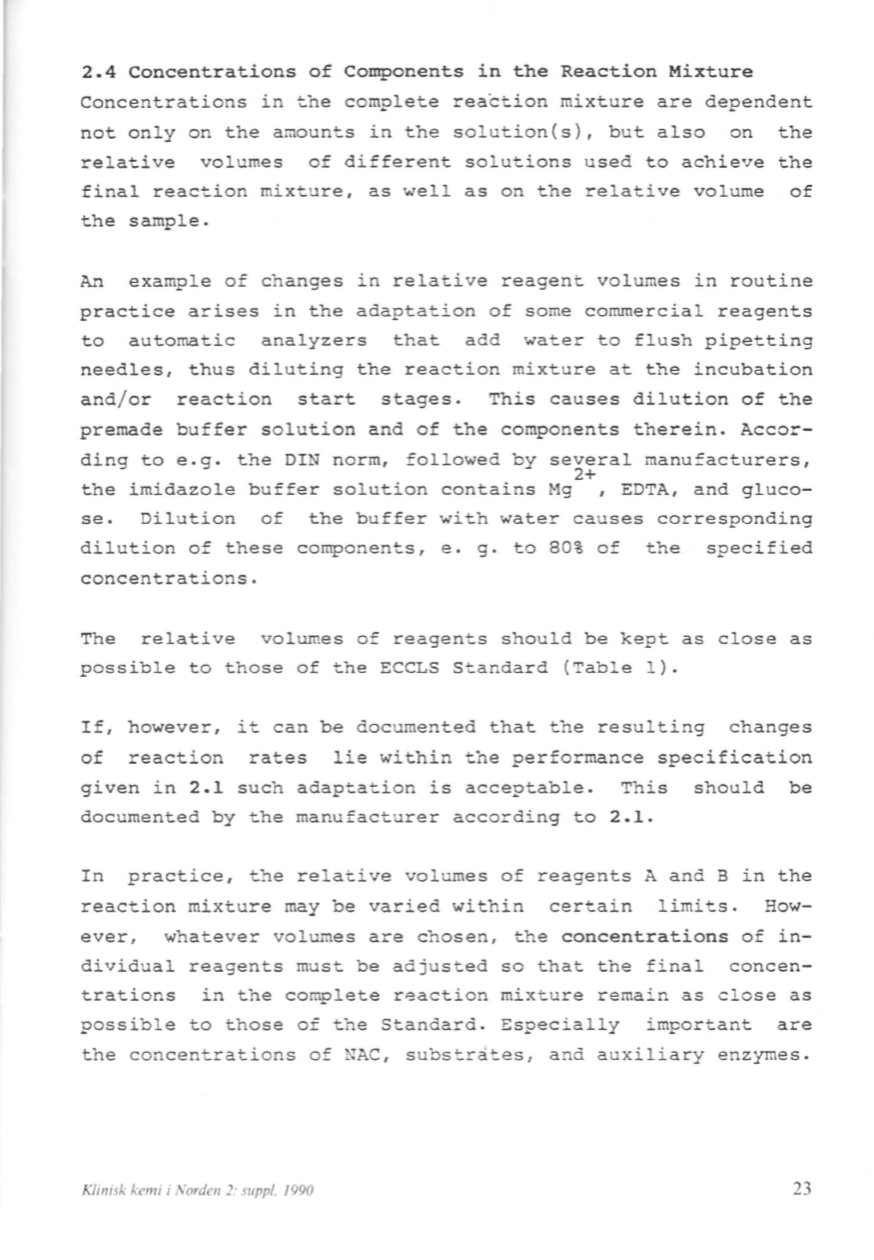
2.4 Concentrations of Components in the Reaction Mixture
Concentrations in the complete reaction mixture are dependent
not only on the amounts in the solution(s), but also on the
relative volumes of different solutions used to achieve the
final reaction mixture, as well as on the relative volume of
the sample.
An
example of changes in relative reagent volumes in routine
practice arises in the adaptation of some commercial reagents
to automatic analyzers that add water to flush pipetting
needles, thus diluting the reaction mixture at the incubation
and/or reaction start stages. This eauses dilution of the
premade buffer solution and of the components therein. Accor–
ding to e.g. the DIN norm, followed by several manufacturers,
2+
the imidazole buffer solution contains Mg
, EDTA, and gluco-
se. Dilution of the buffer with water eauses corresponding
dilution of these components, e. g. to 80% of the specified
concentrations.
The relative volumes of reagents should be kept as close as
possible to those of the ECCLS standard (Table l).
If, however, it can be documented that the resulting changes
of reaction rates lie within the performance specification
given in 2.1 such adaptation is acceptable. This should be
documented by the manufacturer according to 2.1.
In practice, the relative volumes of reagents A and B in the
reaction mixture may be varied within certain limits. How–
ever, whatever volumes are chosen, the concentrations of in–
dividual reagents must be adjusted so that the final concen–
trations in the complete reaction mixt ure remain as close as
possible to those of the standard. Especially important are
the concentrations of NAC , substrates, and auxiliary enzymes.
Klinisk kemi
i
Norden 2: supp/, / 990
23


